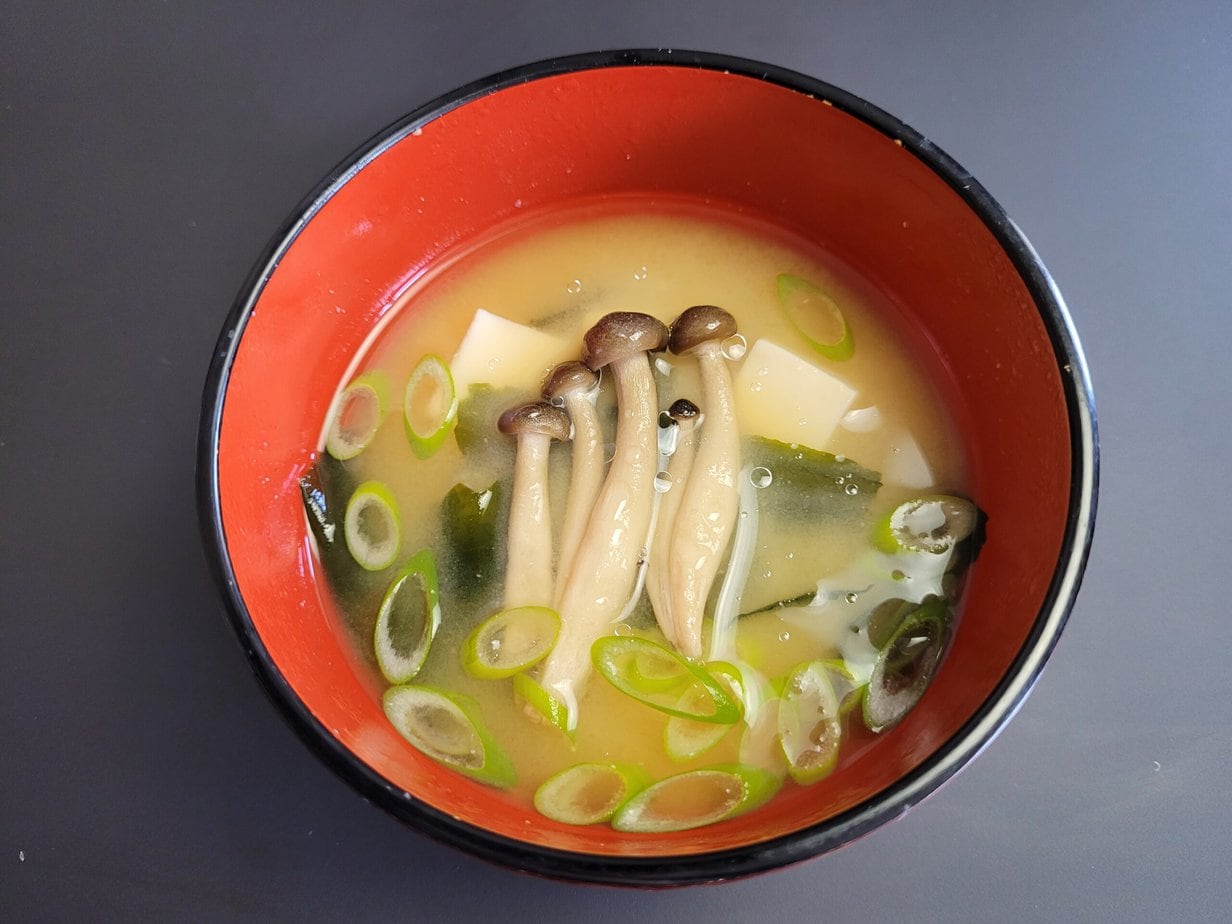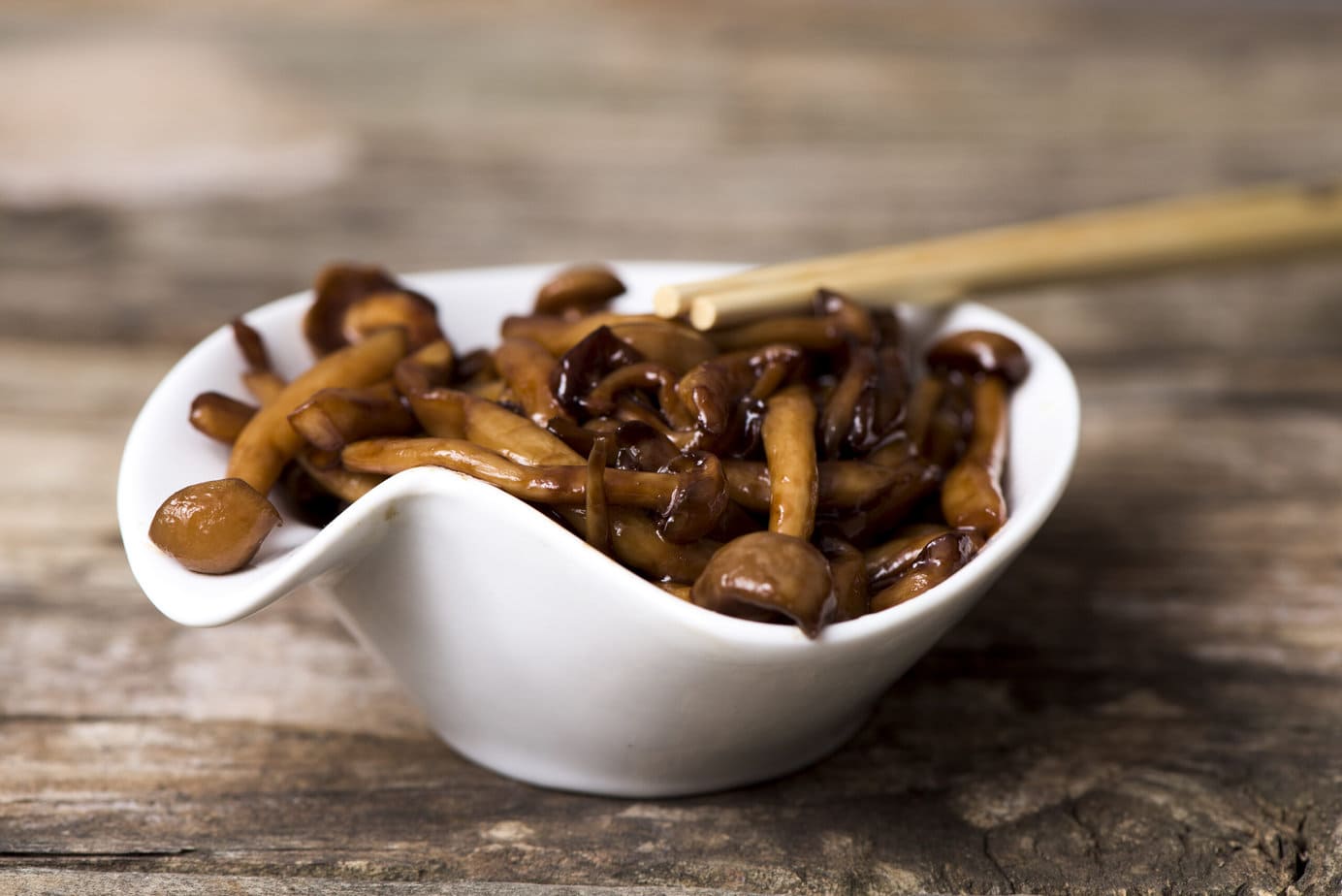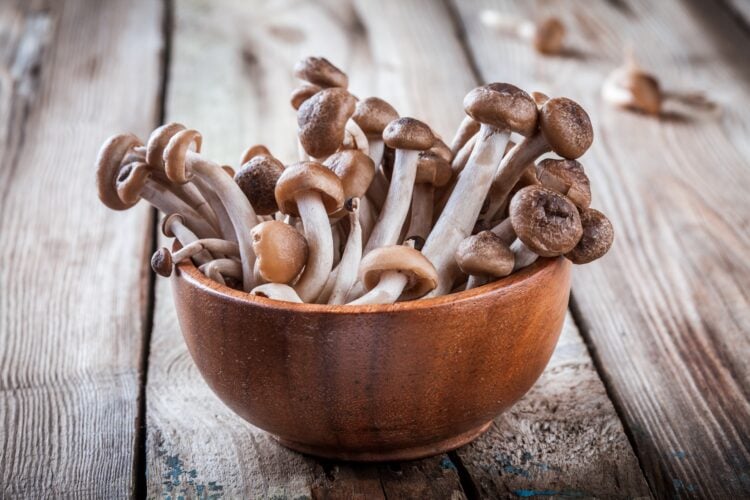Shimeji mushrooms are a variety of Asian mushroom with a crunchy texture and a delicious nutty flavour. They are also known as beech mushrooms because in the wild they grow on fallen beech trees. They are widely used in Japanese cuisine
What are Shimeji mushrooms?
Shimeji mushrooms are an edible mushroom species, Hypsizygus tessellatus, native to East Asia but cultivated in North America, Europe and Australia, where they are known as beech mushrooms.
They have small round caps and long slender stems that grow from an interconnected base. They are often found on dead or decaying beech trees, hence their name, as well as on poplars and elms.

There are a number of shimeji mushroom varieties, although the most common are white shimeji, also known as white beech mushroom, white clamshell mushroom or bunapi-shimeji; and brown shimeji, also known as brown beech, brown clamshell or buna-shimeji mushrooms. The colours are similar to white button mushrooms and brown cremini mushrooms.
Shimeji mushrooms have a crunchy texture and a deep umami nutty flavour because of the high concentration of natural amino acids called glutamates they contain, much like foods such as Parmesan cheese and anchovies.
While wild shimeji mushrooms grow on fallen hardwood trees, commercially cultivated ones are grown in a bed of grains, sawdust and other organic matter.
What do Shimeji mushrooms taste like?
Raw, they are tough and bitter, but cooking softens them and removes the bitterness. They are often served in stir-fries, soups and alongside roasted meats and wild game.
The brown variety is a little richer, while the white ones are milder, but both types are packed with mushroom flavour.
They are also popular ingredients in hot pots, rice and noodle dishes and tempura, as well as omelettes, stews and sauces. For example, they can be added to a miso soup recipe

Cooking with Shimeji mushrooms
When cooking with shimeji mushrooms, the first step is to cut the base off the cluster of mushrooms, then separate the stems so they cook evenly.
Both high-heat cooking and slow low-temperature cooking are suitable for preparing shimeji mushrooms, and they work well with moist-heat and dry-heat methods.
Next, transfer them to a bowl of cold water and rinse to wash them. Any dirt will sink to the bottom. Drain the mushrooms in a colander and repeat the cleaning process in a bowl of fresh water if necessary. Once clean, they are ready to use.
Most mushrooms cannot be “overcooked”; they simply lose moisture and shrink in size.
Shimeji mushrooms are rather unique in this regard because they have a slightly crunchy texture and excessive cooking can cause them to lose that firmness.
They cook quite quickly, so be sure to test after 3 to 4 minutes of sautéing or stir-frying to make sure they don’t lose their crunch.

Shimeji mushrooms make an excellent pizza topping and are also delicious in salads and omelettes.
Where to buy Shimeji mushrooms?
Shimeji mushrooms can be found in specialty food stores and Asian grocery stores.
They can also be purchased online. They are generally sold in plastic packaging, which makes inspection more difficult, but try to select ones that are dry and firm rather than slimy or drooping.
How to store Shimeji mushrooms?
Some shimeji mushrooms are wrapped very tightly in plastic, which is generally not good for mushrooms because plastic encourages condensation that can lead to spoilage… Ideally it is not too tight
Keep the unopened package in the refrigerator. Once the plastic is removed, you can wrap the mushrooms in paper towels or store them in a paper bag in the crisper drawer and use them within 5 days.

